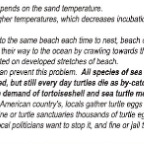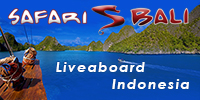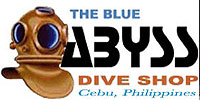Turtles
Sea turtles are found in warm and temperate seas throughout the world. They are characterized by a large, streamlined shell and non-retractile head and limbs. All species except the leatherback belong to the Cheloniidae family. The large leatherback turtle belongs to the Dermochelyidae family, and is its only member. The adults of most species are found in shallow, coastal waters, bays, lagoons and estuaries. The juveniles mostly stay in bays, estuaries or in open water. Some sea turtle populations nest and feed in the same areas, while others migrate great distances. Sea turtles are as good as always submerged, and therefor developed a special system (anaerobic) of respiration. When surfacing to breath, a sea turtle can quickly refill it's lungs with a single loud exhalation and rapid inhalation. Their large lungs have adapted to permit rapid exchange of oxygen and to avoid trapping gases during deep dives. It takes decades for sea turtles to reach sexual maturity. After mating at sea, the adult female will go on land to nest at night. They make around seven nests per season. The female will dig a 50 cm. deep circular hole using her hind flippers, than starts to fill up the nest with 50 to 200 soft-shelled eggs, depending on the species. After laying, she refills the nest with sand until it is relatively visual undetectable. All this happens between thirty to sixty minutes. She then returns to the ocean, and leaves the eggs unattended. Incubation time takes about two months. When ready, the hatchlings tear their shells apart with their snout and dig sand till they reach the surface. Once at the surface, they instinctively head towards the sea. Only a very small proportion of each hatch survives. The hatchling's gender depends on the sand temperature. Lighter sands maintain higher temperatures, which decreases incubation time and results in more female hatchlings. Since many turtles return to the same beach each time to nest, beach development can disrupt the cycle. Hatchlings find their way to the ocean by crawling towards the brightest horizon, and so can become disorientated on developed stretches of beach. Only lighting restrictions can prevent this problem. All species of sea turtles are listed as threatened or endangered, but still every day turtles die as by-catch due to imprecise fishing methods and the demand of tortoiseshell and sea turtle meat on the black-market.
















